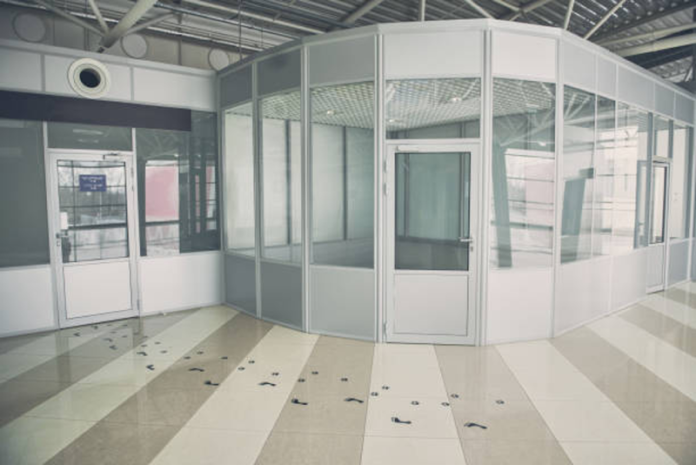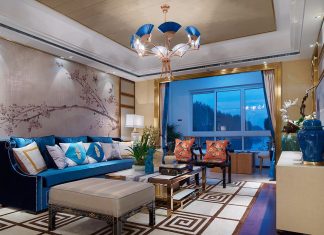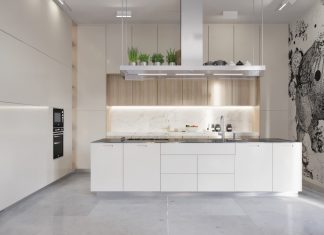Fire rated glass partitions combine safety and elegance in the fast-paced world of building and design, where safety often outweighs flair. Clear barriers prevent fire and improve aesthetics. This blog covers fire rated glass barriers’ design, science, safety, and aesthetics. We also discuss types, benefits, cost considerations, case studies, and future trends in fire rated glass partitions.
Fire rating knowledge
Fire-resistant glass partition designations vary. To balance safety and functionality, architects and designers must comprehend these classes. Class A, B, and C fire protection are offered depending on space needs. Building fireproof glass walls is laborious. Fires need heat resistance, radiant heat control, and structural integrity. Residents may escape safely because fireproof glass walls resist flames and retain their form. To pick fire resistant glass for varied projects, architects and designers must grasp these technical factors. Fire-resistant glass walls let architects create safe, appealing spaces.
Fire rated glass partitions benefit
Appearance – Contrary to common assumptions, fire resistant glass walls look better. Their transparency provides safety and an airy atmosphere.
Security and safety – Fireproof glass partitions contain flames. This reduces property damage and protects residents. Transparent walls provide safety and security without blocking the view. To seamlessly incorporate fireproof glass into their designs, architects and designers must understand its dual function in safety and security.
Integration of natural light – These glass dividers let natural light through. This dual functionality saves energy and creates a well-lit, healthy atmosphere. This allows architects to utilize fireproof glass that meets safety standards and biophilic design concepts to promote occupant well-being through nature. Besides safety, fire resistant glass dividers look contemporary.
Types of fire rated glass
Glass wired
Fireproof wired glass with metal mesh is vintage. The fire resistance and clarity make it suitable for various situations. Historically, fireproof glass has prevented fires.
Laminated glass
Fire resistant fused layer laminated glass secures the surroundings. Despite the fire, its layers are reliable. Architects may recommend laminated glass for high-traffic or impact-prone locations.
Ceramic glass
Material advancements developed high-temperature ceramic glass. High-heat environments favor fire resistant glass. Its resilience and versatility make it ideal for fire-resistant applications. Ceramic glass’s unique properties can help architects using new materials handle fire-prone issues. Knowing the fire rated glass wall helps architects and designers choose the best.
Setup and maintenance
Professional installation importance
Unburnable glass barriers are simple to install but require attention. Professional installation is required for fire-safe partitions. Architects and builders should work with professional installers to optimize safety measures. Expert installation improves glass partition safety and assures compliance with industry standards and local construction norms.
Longevity maintenance tips
Preserving fireproof glass barriers requires regular maintenance. Clean with suitable solutions and check for wear and tear to prolong safety features’ lifespan. To keep fire resistant glass barriers working, architects should give clients maintenance instructions. Communicating with clients about periodic maintenance helps fireproof glass dividers stay functional and attractive. Proper installation and maintenance standards and the life and efficacy of these glass partitions.
Commercial fire rated glass partitions
Businesses must comply with strict construction requirements, and fireproof glass barriers help. These rules protect occupant safety and improve space design and functionality. Architects and designers must follow these rules to integrate fire resistant glass barriers into commercial buildings. To design safe and compliant business facilities, architects must understand building code standards, including minimum fire ratings. Office architecture is shifting toward open workspaces, and fire resistant glass dividers help. These dividers increase safety while fostering collaboration. These glasses in commercial environments match changing business and employee preferences. Commercial architects should combine safety and the demand for open, collaborative offices and use unburnable glass to complete the design. Commercial fireproof glass walls and fire doors improve safety and collaboration.
Residential fire rated glass
In modern house architecture, fire resistant glass symbolizes modernity. Safety without sacrificing style is becoming more important to homeowners. Unburnable glass in residential construction provides security and aesthetics. Beyond aesthetics, fireproof glass walls boost home safety. Fire dividers slow flame propagation, allowing you time to leave. Unburnable glass partitions blend into living spaces, boosting safety, design, and peace of mind. This glass is essential for safe and appealing living arrangements; thus, architects should stress it. These glasses housing is safe and stylish.
Cost considerations
Initial Investment – While fire-rated glass barriers are pricey, they’re a good investment. The upfront expense ensures long-term safety against unanticipated disasters. Fireproof glass protects lives and property over time, so architects should help clients understand its value.
Long-term savings – Fire-resistant glass barriers save damage and restoration costs over time. They avoid disasters and save property owners money. This glass saves money and property while protecting To mitigate risk, architects should present a detailed cost evaluation of fire-rated glass’s financial advantages. Understanding fireproof glass’s initial cost and long-term savings helps stakeholders make budget-friendly decisions.
Fire rated glass choice
Consider space while purchasing fire resistant glass. Best relies on occupancy, fire risk, and aesthetics. Customers should work with architects and designers to choose fireproof glass. The custom unburnable glass looks great. Builders and designers may simply include safety features like tinted glass and gorgeous patterns with customization. Customizable fire-rated glass meets safety standards and suits a project’s design. Clients and architects should create safe and attractive customization choices. Custom fire rated glass partitions enhance room design and utility.
Case study
Implementations succeed – Many successful projects prove fire resistant glass barriers work. Case studies demonstrate how commercial, residential, and public spaces improve safety and design. A successful implementation can assist architects, builders, and clients in picking fireproof glass.
Effect on design and safety – Design and safety intersect in these case studies. These glasses have saved lives and improved spaces, displaying their adaptability. Real-world fire resistant glass safety and design impacts affect decision-making and uptake. Case studies demonstrate fireproof glass dividers’ benefits.
Trends in fire rated glass
Innovations in technology – Technological advances affect unburnable glass. Smart glass with dynamic transparency and other innovations offers safety and utility. Following these technological breakthroughs can help architects and designers incorporate cutting-edge solutions into their designs.
Sustainable choices – Fireproof glass will become more eco-friendly as sustainability improves. Eco-friendly fire-resistant architectural materials may become widespread. Fireproof glass with sustainable options promotes green building. Fire resistant glass will evolve with technology and sustainability.
Common misconception
Truth about fire rated glass – Debunking fireproof glass misconceptions is vital. Discussing visibility, maintenance, and durability builds trust in safety elements. Clients, architects, and builders learn about fireproof glass to encourage its usage and dispel misconceptions.
Clarifying safety concerns – Installing fire resistant glass walls causes safety issues. Explaining how these barriers are carefully researched and authorized for safety may calm fears and encourage their use. Open communication about unburnable glass science and safety promotes architectural confidence. Active communication and education may dispel fireproof glass myths and resolve safety concerns.
Sector rules
Standards for compliance – Unburnable glass must always fulfill industry standards. Architects and builders must certify glass walls for fire resistance. Meeting shifting regulations ensure project compliance, and fireproof glass fulfills the highest safety standards.
Certification matters – Certification verifies fire-rated glass barriers’ endurance. It certifies the product’s safety and reliability, strengthening stakeholder confidence. Building designers should use certified fireproof glass barriers to safeguard inhabitants. Fire resistant glass walls reliability and efficacy require certification.
Design safety partnerships
Fire safety experts and architects – Fire safety and architects must work together to design and install unburnable glass dividers. Our interdisciplinary approach seamlessly integrates beauty and safety into the architectural concept. Fire safety experts can help architects create appealing, safe spaces.
Plan integration of fire rated glass – The design includes fireproof glass. Architectural and fire safety professionals should incorporate these divisions into the design to ensure building safety. Early cooperation integrates fire-rated glass into the design idea, improving safety and aesthetics. Adding unburnable glass to architectural plans requires collaboration between architects and fire safety professionals.
Conclusion
We conclude that fire rated glass partitions combine safety and beauty. Flame-proof elegance is changing design and architecture in business and residential environments. The mix of transparency, safety, and aesthetics makes fire resistant glass walls vital in modern settings. Technology and sustainability are transforming fire-rated glass, offering increased safety, utility, and environmental awareness.

















